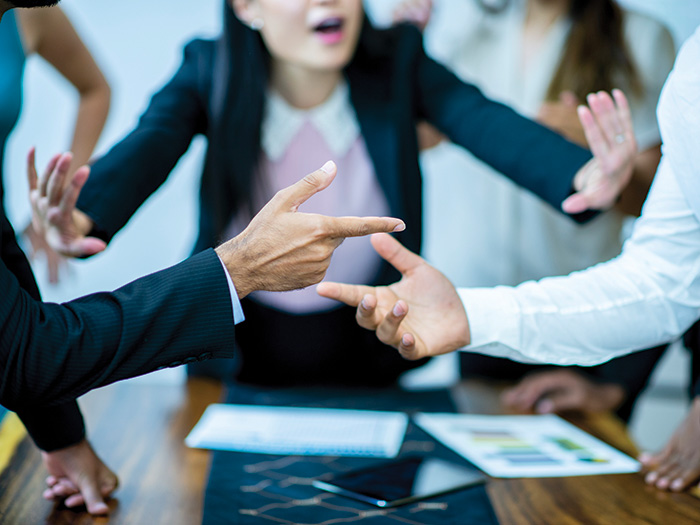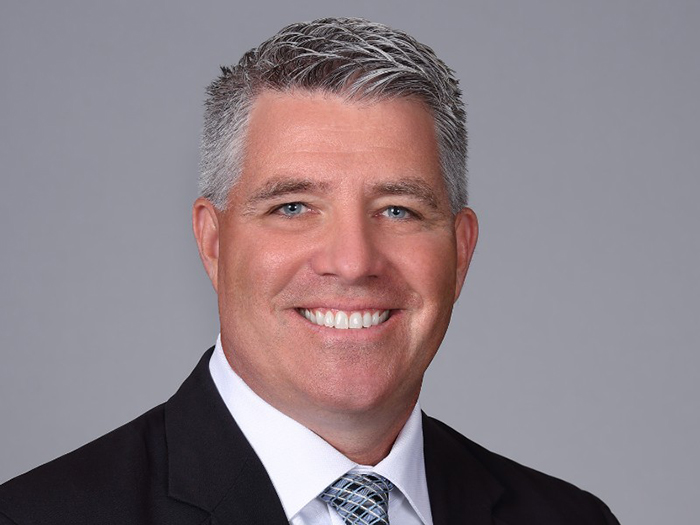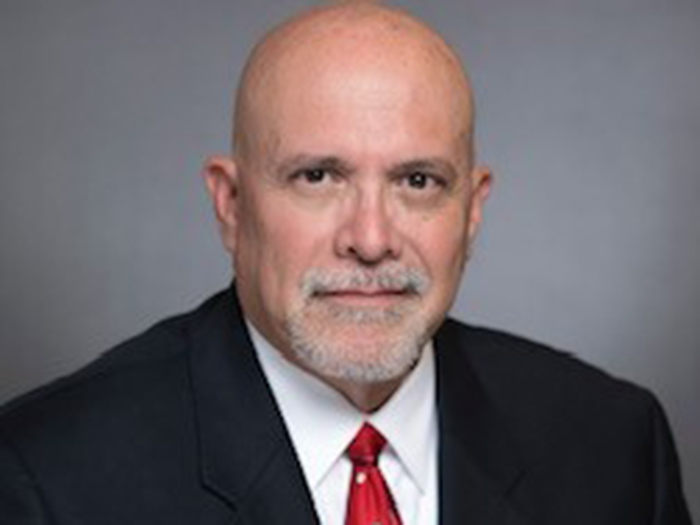Stifled Pain, Silent Crisis: Unmasking the Problem of Staff-on-Staff Harassment in Higher Ed

When it comes to workplace settings in virtually every industry and sector, harassment among coworkers is a considerable risk.
“Harassment is a form of discrimination. It is illegal on the same grounds that discrimination is illegal — such as sex, race, age or disability,” said Hillary Pettegrew, senior risk management counsel for United Educators (UE).
Accordingly, harassment in the higher education space is a risk that all colleges and universities should have on their radar.
“It’s certainly relevant,” said Jay Sheehan, national management liability practice account director for Risk Strategies.
“With regard to educators’ legal liability, the majority of claims arise from employment practices liability (EPL) incidents and not from failure to educate allegations. A significant portion of the EPL claims involve harassment of some type,” he said.
Harassment in the Higher Ed Space
While there is no research that would suggest a greater prevalence of staff-on-staff harassment in higher ed, there are “systemic risk factors that contribute to [its] visibility and awareness,” according to Mark Muscatiello, managing director of education and nonprofit for First Fidelity Brokerage.
Muscatiello noted that higher ed institutions are likely to “conduct research on issues related to harassment and have mechanisms in place to report and address incidents.”
Because of this attention to reporting and researching, “there may [be] a higher level of awareness and visibility of staff-on-staff harassment,” per Muscatiello.
A higher ed institution’s power structure and dynamics can create an optimal setting for staff-on-staff harassment to occur.
“Universities typically have hierarchical structures, with faculty and staff members holding various positions of authority with different levels of job protection,” Muscatiello said.
These levels of job protection include staff members who are already tenured and those who aren’t, according to Muscatiello.
“These power imbalances can create an environment where harassment is more likely to occur,” he said.
Sheehan agreed: “Within working environments, there’s more than likely going to be an element of power or dynamic disparity.”
The presence of students in a working environment can also contribute to “blurred working relationships,” per Muscatiello. Many colleges and universities will hire students to work as teaching or research assistants to faculty and in administration offices.
“The presence of students in the work environment can introduce complexities that may contribute to staff-on-staff harassment incidents,” Muscatiello said.
It is important to note that incidents of staff-on-staff harassment can manifest in several different ways, since there are several different types of staff within a higher ed institution.
“It takes any number of forms,” Sheehan said. “Professor and professor, professor and admin, and then from the higher-ups down.
“It can occur in any organization — it just happens to be in the world of academia.”
As for the primary risks, higher ed institutions should be concerned about their legal liability. Not only are institutions required to “comply with legal obligations related to harassment prevention and reporting,” according to Muscatiello, but the presence of social inflation in rulings can also present a major risk.
“Failing to address harassment properly can have serious monetary consequences for institutions,” Pettegrew said.
The Presence of Sexual Harassment
As long as staff-on-staff harassment stands as a significant risk, the specific exposures that sexual harassment brings should be top of mind for institutions of higher ed.
“From UE’s perspective, sexual harassment is the type of harassment we see alleged most often against our higher ed members,” Pettegrew said.
She continued, “Faculty tends to be the job category that is most alleged to be perpetrators. In some cases, it’s other faculty they’re harassing; in other cases, it’s other employees.”
Sexual harassment cases among employees are an obvious legal exposure for universities, though they may not always be on the hook.
“If a supervisor harasses an employee, generally the institution will be liable for that,” Pettegrew said. “If it’s a case of peer-on-peer harassment, it may depend on whether the institution conducted training and had the necessary policies and procedures.”
Another risk that can fall under the sexual harassment umbrella is the potential for retaliation by the accused.
“Retaliation is a common issue, in part because it’s a natural human response to being accused of wrongdoing,” Pettegrew said.
The risk of retaliation remains relevant regardless of whether the accused perpetrator is guilty of the harassment, according to Pettegrew.
“It’s natural to be defensive, maybe more so if one is unjustly accused,” she said.
Finally, the presence of repeat sexual harassers can have impacts on other employees and produce dire consequences for a higher ed workplace as a whole. Pettegrew noted that this risk is especially acute when the perpetrator is a repeat offender or has harassed multiple employees.
She said, “For institutions, especially in cases where there is a potential repeat offender or a high-ranking offender, in addition to the impact on the claimants themselves, there can be long-term effects such as poor employee morale, damaged productivity and difficulty in recruiting new employees.”
This risk goes to show that sexual harassment causes harm not only to those involved but to the entire higher ed institution.
How Universities Can (and Should) Respond
Higher ed institutions are responsible for making their workplaces free from harassment for their employees.
Fulfilling that promise requires training. As the faculty and staff of colleges and universities would know best: Education is everything.
“Training or education should be mandatory for supervisors and their employees,” Pettegrew said. “They’re being educated not only on what a school’s policies and procedures say but on the importance of avoiding harassment.”
Sheehan noted that ensuring employees clearly understand what is expected of them is also crucial to preventing workplace harassment.
Methods of education and training can get creative to keep faculty engaged. This can also be helpful in accurately defining what staff-on-staff harassment entails.
Pettegrew said that live workshops and seminars, which include a case study approach, can be highly effective.
Additionally, keeping track of which employees attend harassment training can be useful data for an institution should it face a lawsuit.
When it comes to reporting a harassment incident, creating an easy and accessible method for employees to report said incident is vital.
To take it a step further, Pettegrew suggested a “centralized report process or having a mechanism for different departments or schools to coordinate their reporting.
“One benefit to that is being able to potentially identify possible serial perpetrators,” she added.
Engaging with employees to discern a vision of what makes a secure workplace for them was one suggestion from Muscatiello.
“Institutions should create a shared vision to address harassment with the goal of fostering a culture of respect, inclusivity and accountability,” he said.
Fostering Consistency and Accountability
Institutions must ensure that they are consistent with their procedures and maintain accountability for staff who engage in harassment against their colleagues.
“You have to clearly define expectations [of employees] with regard to acceptable and unacceptable behavior, apply the standards consistently across the board and hold people accountable,” Sheehan said.
Pettegrew echoed these sentiments: “It is especially important to have enforcement of the same rules for all employees, including high-ranking ones such as presidents or administrators. These officials should have at least the same standard of conduct as the employees who are subordinate to them.”
As mentioned before, harassment is a form of discrimination.
With proper education, policy making and strong moral leadership, higher education institutions can foster an environment where abusive or predatory behavior is readily addressed and employees feel safe in the workplace.
“It’s important from a moral imperative to address harassment in the workplace,” Pettegrew said.
“Preventing and addressing harassment is the right thing to do.” &










